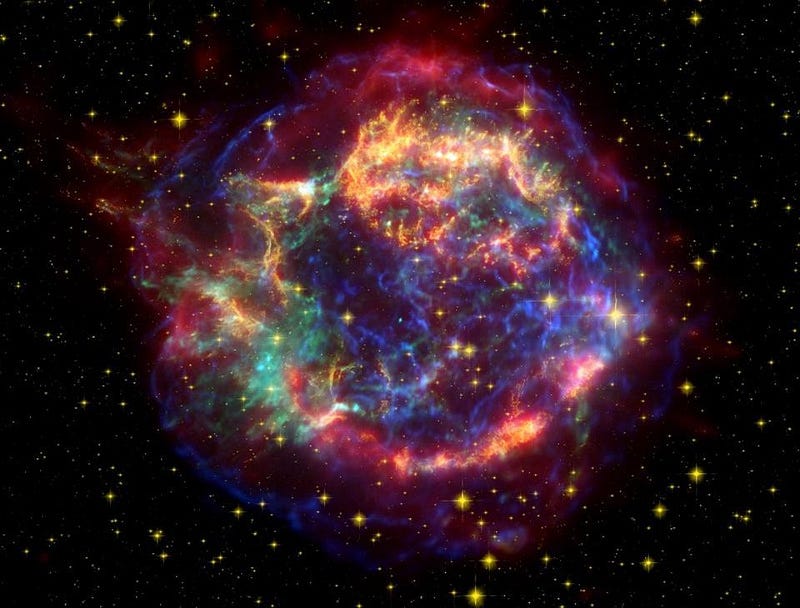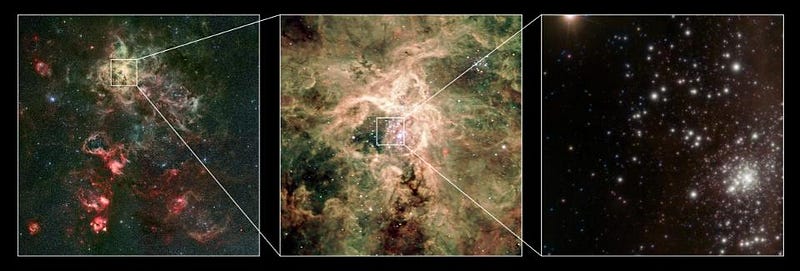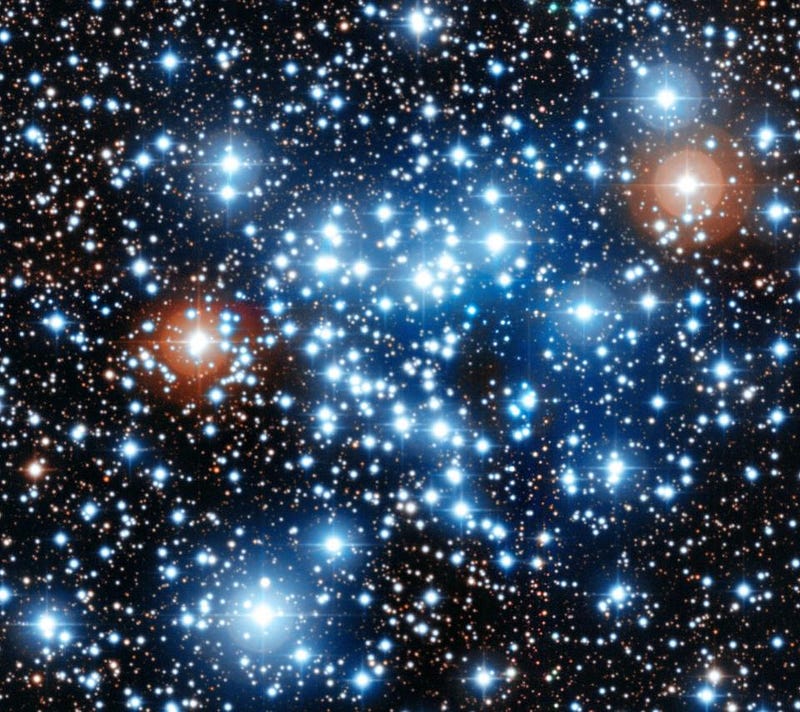This one imperfection in nuclear physics allowed Earth to exist

If all we had were hydrogen and helium after the Universe were born, we wouldn’t be here today.
“The discovery of deuterium and the marked differences in the physical and chemical properties of hydrogen and deuterium, together with an efficient method for the separation of these isotopes, have opened an interesting field of research in several of the major branches of science.” –Harold Urey
In order to create a rocky planet that’s teeming with life, the Universe needed to create large amounts of the heavy elements required for life’s processes. To make many of those elements, such as Tin, Iodine, Selenium, Molybdenum, Zinc, and Copper, you need supernovae to have occurred many times in our galaxy’s past. To get many more, such as Iron, Calcium, Cobalt, Sulfur, and Potassium, you need stars massive enough to create them. Yet the Universe was born, almost exclusively, with mere hydrogen and helium. If all you had was hydrogen and helium, it would be impossible to make a star more massive than about three times the Sun’s mass; these heavy elements would never be created and spread throughout the Universe. The only reason we can exist, today, is because one tiny imperfection in the early Universe allows the stars to grow hundreds of times as massive.

In order for the Universe to exist as we know it, we need these massive stars. In a star like our Sun, the central region reaches high enough temperatures to fuse hydrogen into helium, which we’ll do until the core run out of fuel. When that happens, the inner parts of the Sun contract down, heating up to temperatures large enough to fuse helium into carbon, along with trace amounts of other elements. But when we’re out of helium fuel, that’s the end-of-the-line for the Sun; we don’t have it in us to fuse carbon or any heavier elements. It takes a star at least eight times as massive as the Sun to do that. It’s those very same massive stars that end their lives in supernovae, creating and recycling large amounts of heavy elements back into the Universe.

In most Milky Way-sized galaxies, we see multiple supernovae every century, indicating that these massive stars are common. In fact, there’s strong evidence that wherever in the Universe you form large bursts of stars, even for the first time, you’ll make many stars massive enough to create these heavy elements. But if all you had were hydrogen and helium, this would create a huge problem: hydrogen fusion begins at temperatures of approximately 4,000,000 K, which requires at least 1.6 × 1029 kg of mass to collapse down into a star. Once hydrogen fusion ignites, however, the outward flux becomes so energetic, very quickly, that no new mass can be added to that star. Once you become a star, you push those gaseous elements that would otherwise gravitate towards you away, preventing your star from growing further.

If all you had were conventional hydrogen and helium, where hydrogen is made of one proton and helium is made of two protons and two neutrons, your proto-star would contract down rapidly, heating up to fusion temperatures in short order and emitting large amounts of high-intensity light. This radiation pushes against the nearby material that helped form the star in the first place, blowing it away from the star and overcoming gravity. You might form stars up to about three times the mass of the Sun, but the more massive ones — the ones we need to create an Earth-like world — would never come to exist.

Thankfully, the Universe has, even from birth, an extra ingredient that makes much more massive stars possible. That extra ingredient is a heavy isotope of hydrogen: deuterium, which contains a proton and a neutron together. When you have deuterium and normal hydrogen nuclei together, it takes only a temperature of 1,000,000 K to fuse them together into helium-3, producing radiation that’s much less violent and forceful. This deuterium-burning is the first nuclear reaction to happen in a proto-star, and it pushes the core outwards enough to cause the temperature to rise far more slowly than if there were only hydrogen. Even a small amount of deuterium, less than 0.01% of the initial star’s mass, can delay the temperature increase up to hydrogen fusion by tens of millions of years, buying gravitation the time it needs to grow stars up to tens or even hundreds of times the mass of the Sun.

So where did this deuterium come from? During the first few seconds after the Big Bang, the Universe was made of protons and neutrons, which attempt to fuse in a chain reaction to form heavier elements. But that first step involves making deuterium, which is easily destroyed by the high-energy radiation permeating the young Universe. It isn’t until minutes have passed that you can make deuterium without it being blasted apart. While this leads to a Universe that’s about 75% hydrogen and 25% helium, there are tiny, trace amounts of deuterium and helium-3 that get formed, along with even smaller amounts of lithium-7.

Even though only about 0.0025% of the Universe, by mass, becomes deuterium (about 1/40,000th) in this process, that’s enough to give even the first stars up to 50 million years to grow in size before hydrogen fusion takes over. Once you make stars that massive, the standard story of hydrogen-helium-carbon fusion takes place, generating large quantities of heavier elements that will get returned to the Universe for future generations of stars.

Rocky planets become possible; the essential elements for life get spread throughout the Universe. By time many billions of years have passed, planets like Earth can form, and organic materials like sugars, amino acids, and aromatic hydrocarbons will simply bind together naturally. The raw ingredients for everything we know life requires automatically pop into place.

But without that tiny bit of inefficiency — without that easily-destroyed deuterium left over from the Big Bang to delay the fusion reactions in the cores of stars — it would all be impossible. Our Universe is an imperfect place. But that’s an absolute necessity. Without those imperfections, we’d never be able to exist.
Ethan Siegel is the author of Beyond the Galaxy and Treknology. You can pre-order his third book, currently in development: the Encyclopaedia Cosmologica.





